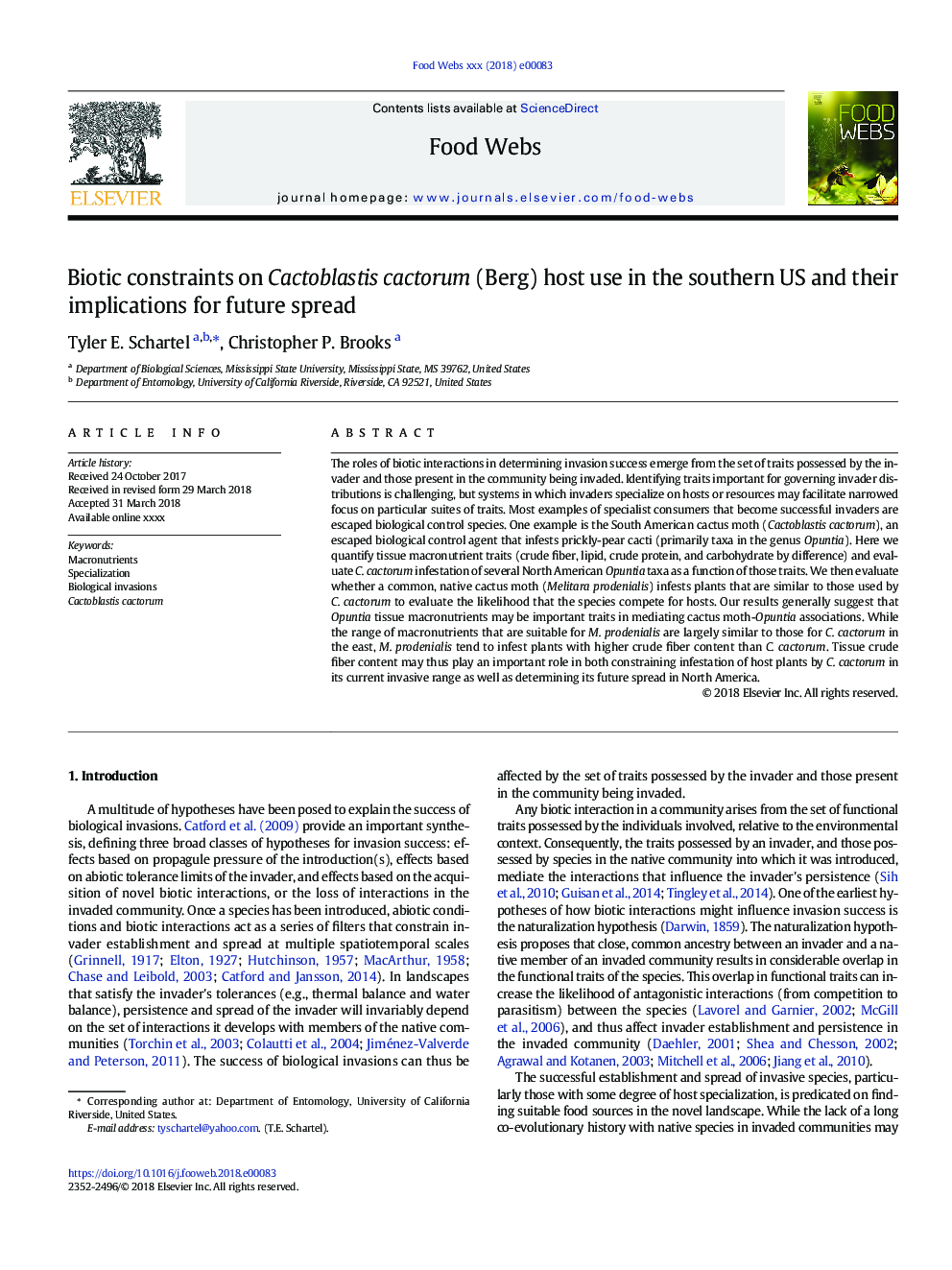| کد مقاله | کد نشریه | سال انتشار | مقاله انگلیسی | نسخه تمام متن |
|---|---|---|---|---|
| 8875292 | 1623630 | 2018 | 9 صفحه PDF | دانلود رایگان |
عنوان انگلیسی مقاله ISI
Biotic constraints on Cactoblastis cactorum (Berg) host use in the southern US and their implications for future spread
دانلود مقاله + سفارش ترجمه
دانلود مقاله ISI انگلیسی
رایگان برای ایرانیان
موضوعات مرتبط
علوم زیستی و بیوفناوری
علوم کشاورزی و بیولوژیک
علوم کشاورزی و بیولوژیک (عمومی)
پیش نمایش صفحه اول مقاله

چکیده انگلیسی
The roles of biotic interactions in determining invasion success emerge from the set of traits possessed by the invader and those present in the community being invaded. Identifying traits important for governing invader distributions is challenging, but systems in which invaders specialize on hosts or resources may facilitate narrowed focus on particular suites of traits. Most examples of specialist consumers that become successful invaders are escaped biological control species. One example is the South American cactus moth (Cactoblastis cactorum), an escaped biological control agent that infests prickly-pear cacti (primarily taxa in the genus Opuntia). Here we quantify tissue macronutrient traits (crude fiber, lipid, crude protein, and carbohydrate by difference) and evaluate C. cactorum infestation of several North American Opuntia taxa as a function of those traits. We then evaluate whether a common, native cactus moth (Melitara prodenialis) infests plants that are similar to those used by C. cactorum to evaluate the likelihood that the species compete for hosts. Our results generally suggest that Opuntia tissue macronutrients may be important traits in mediating cactus moth-Opuntia associations. While the range of macronutrients that are suitable for M. prodenialis are largely similar to those for C. cactorum in the east, M. prodenialis tend to infest plants with higher crude fiber content than C. cactorum. Tissue crude fiber content may thus play an important role in both constraining infestation of host plants by C. cactorum in its current invasive range as well as determining its future spread in North America.
ناشر
Database: Elsevier - ScienceDirect (ساینس دایرکت)
Journal: Food Webs - Volume 15, June 2018, e00083
Journal: Food Webs - Volume 15, June 2018, e00083
نویسندگان
Tyler E. Schartel, Christopher P. Brooks,